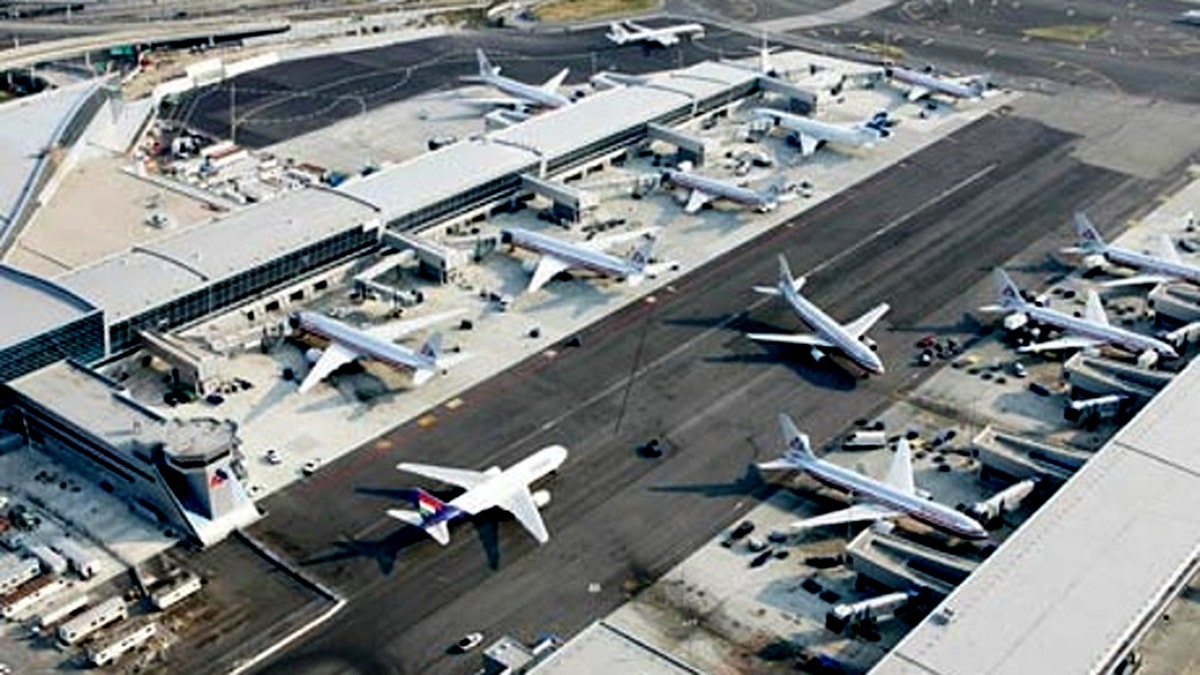
The DOT rules were instated to improve waiting times on the tarmac. (AP)
A study by Dartmouth College and MIT has shown that passengers faced longer overall delays after the U.S. DOT’s 2010 tarmac delay rule was instituted. The study, which appeared in an academic journal called Transportation Research Part A: Policy and Practice, also has recommendations about how to improve the rule so that it actually results in less overall travel time.
After several incidents which saw passengers stranded on planes that were idle on the tarmac for hours, consumer groups began asking the DOT to take action. This led to the 2010 tarmac delay rule, which said that airlines faced steep fines if their planes idled on the tarmac for more than three hours without giving passengers the chance to disembark. The rule was welcomed by pretty much everyone as a major step in the right direction for fliers’ rights.
Solving one problem, but creating another?
Some airlines have been hit with fines because they broke the three-hour limit, but most have been able to adjust. However, the Dartmouth study showed that while these adjustments limited tarmac delays, they also increased the number of delays and cancelations that occurred before boarding.
Even the most jaded flier would have to agree that this seems like an obvious strategy for airlines. They don’t want to risk major fines, so if they think there is a danger of breaking the three-hour cap, they will simply cancel the flight or delay boarding until the weather (or other delay cause) clears.
A mathematical picture of delays
Dartmouth and MIT researchers looked at delay data from 2007. Rather than comparing the statistics from that year with a later year, they created a formula using post-2010 data that showed how airlines reacted to potential tarmac delays. They then applied this formula to the 2007 statistics. This allowed them to create hypothetical, but mathematically supported, scenarios that showed how airlines would have reacted if the tarmac delay rule was in place in 2007.
Why do it like this? Other variables (more fliers, more flights, airport expansions) could have skewed the data if 2007’s stats were compared with, say, 2011’s. By creating a math-backed “alternate reality,” the researchers could make a kind of apples-to-apples comparison and get a better picture of how airlines really reacted to the rule.
As expected, the amount of time spent on the tarmac was drastically reduced by the 2010 law. However, passengers paid for less time on the tarmac with an increasing number of delays and cancelations. When all the data was tallied, passengers had, on average, three more minutes of in-airport delays for every minute saved on tarmac delays. This fits with what many people thought the airlines’ response to the tarmac delay rule would be: canceling or delaying flights rather than risking tarmac delays and the hefty fines that come with them.
This could be seen as a case of creating a new problem while solving the original issue. Researchers also used their formulas to suggest a way to tweak the rule so that it would reduce both tarmac delays and in-airport delays as much as possible.
Would tweaking the current rule help?
One of the researchers, Dartmouth assistant professor Vikrant Vaze, explained: "we concluded that a better balance between the conflicting objectives of reducing the frequency of long tarmac times and reducing total passenger delays can be achieved through a modified version of the existing rule. This modified version involves increasing the tarmac time limit to 3.5 hours and only applying the rule to flights with planned departure times before 5 p.m. Finally, in order to implement the rule more effectively, we suggest the tarmac time limit be defined in terms of when the aircraft begin returning to the gate instead of when passengers are allowed to deplane."
After stories of overflowing lavatories and hungry passengers trapped in planes for 10-plus hours, the DOT had to do something. The 2010 passengers' rights rules were a quick fix to some serious complaints. Tweaking them in 2016 could be a good idea, but it could also make them more complicated to enforce, and it could give airlines loopholes that would allow them to avoid penalties.
More from TravelPulse
Airfare to College Football Title Game Skyrocketed Days Before Kickoff
MSC Cruises Teams with Samsung to Equip Next-Gen Ships
Uber Heats Up Winter With Annual Price Drop
